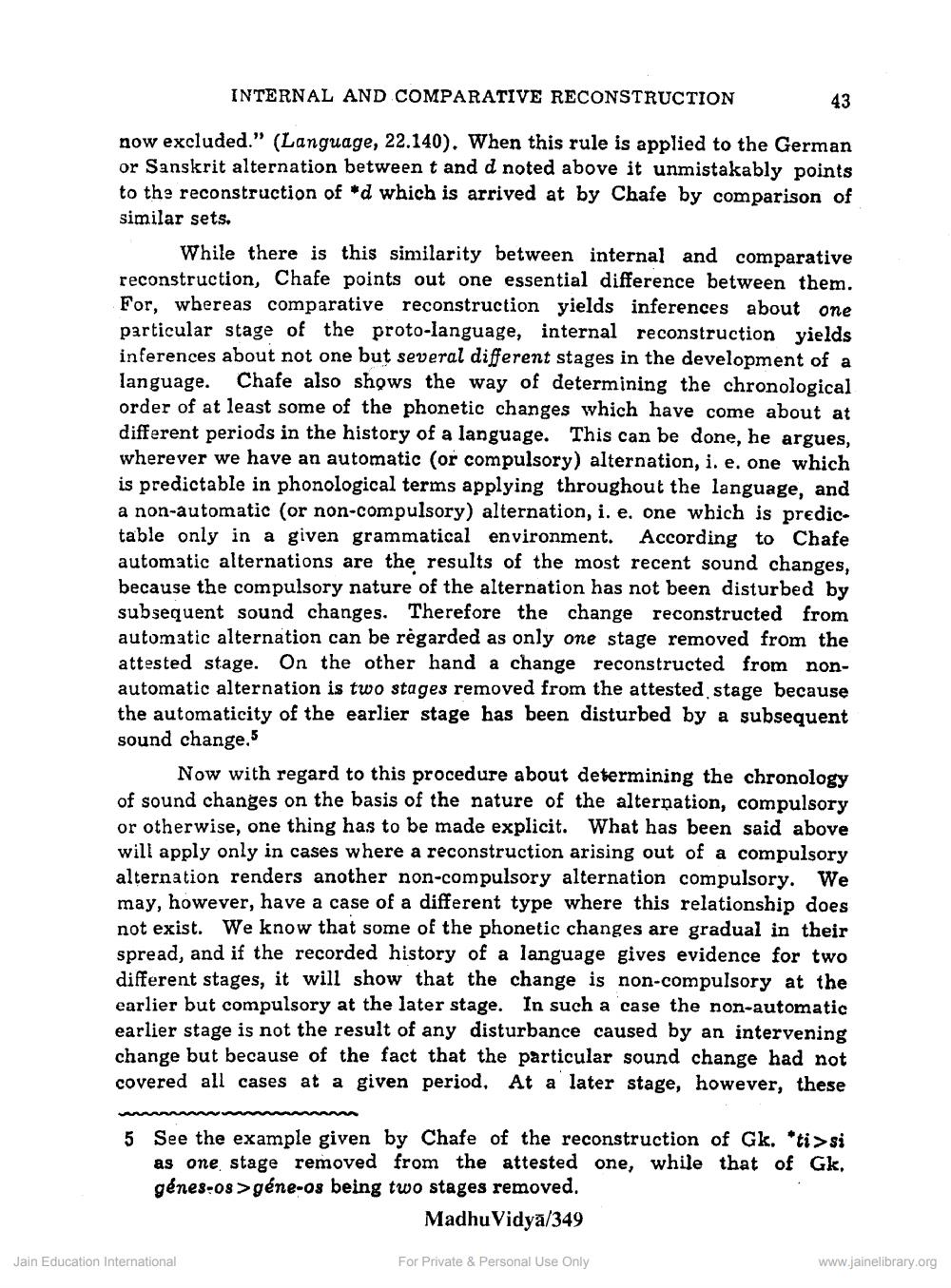________________
INTERNAL AND COMPARATIVE RECONSTRUCTION
now excluded." (Language, 22.140). When this rule is applied to the German or Sanskrit alternation between t and d noted above it unmistakably points to the reconstruction of *d which is arrived at by Chafe by comparison of similar sets.
While there is this similarity between internal and comparative reconstruction, Chafe points out one essential difference between them. For, whereas comparative reconstruction yields inferences about one particular stage of the proto-language, internal reconstruction yields inferences about not one but several different stages in the development of a language. Chafe also shows the way of determining the chronological order of at least some of the phonetic changes which have come about at different periods in the history of a language. This can be done, he argues, wherever we have an automatic (or compulsory) alternation, i. e. one which is predictable in phonological terms applying throughout the language, and a non-automatic (or non-compulsory) alternation, i. e, one which is predictable only in a given grammatical environment. According to Chafe automatic alternations are the results of the most recent sound changes, because the compulsory nature of the alternation has not been disturbed by subsequent sound changes. Therefore the change reconstructed from automatic alternation can be regarded as only one stage removed from the attested stage. On the other hand a change reconstructed from nonautomatic alternation is two stages removed from the attested stage because the automaticity of the earlier stage has been disturbed by a subsequent sound change,
Now with regard to this procedure about determining the chronology of sound changes on the basis of the nature of the alternation, compulsory or otherwise, one thing has to be made explicit. What has been said above will apply only in cases where a reconstruction arising out of a compulsory alternation renders another non-compulsory alternation compulsory. We may, however, have a case of a different type where this relationship does not exist. We know that some of the phonetic changes are gradual in their spread, and if the recorded history of a language gives evidence for two different stages, it will show that the change is non-compulsory at the earlier but compulsory at the later stage. In such a case the non-automatic earlier stage is not the result of any disturbance caused by an intervening change but because of the fact that the particular sound change had not covered all cases at a given period, At a later stage, however, these
5 See the example given by Chafe of the reconstruction of Gk. *ti>si
as one stage removed from the attested one, while that of Gk, génes-08 >géne-os being two stages removed.
Madhu Vidyā/349
Jain Education International
For Private & Personal Use Only
www.jainelibrary.org




